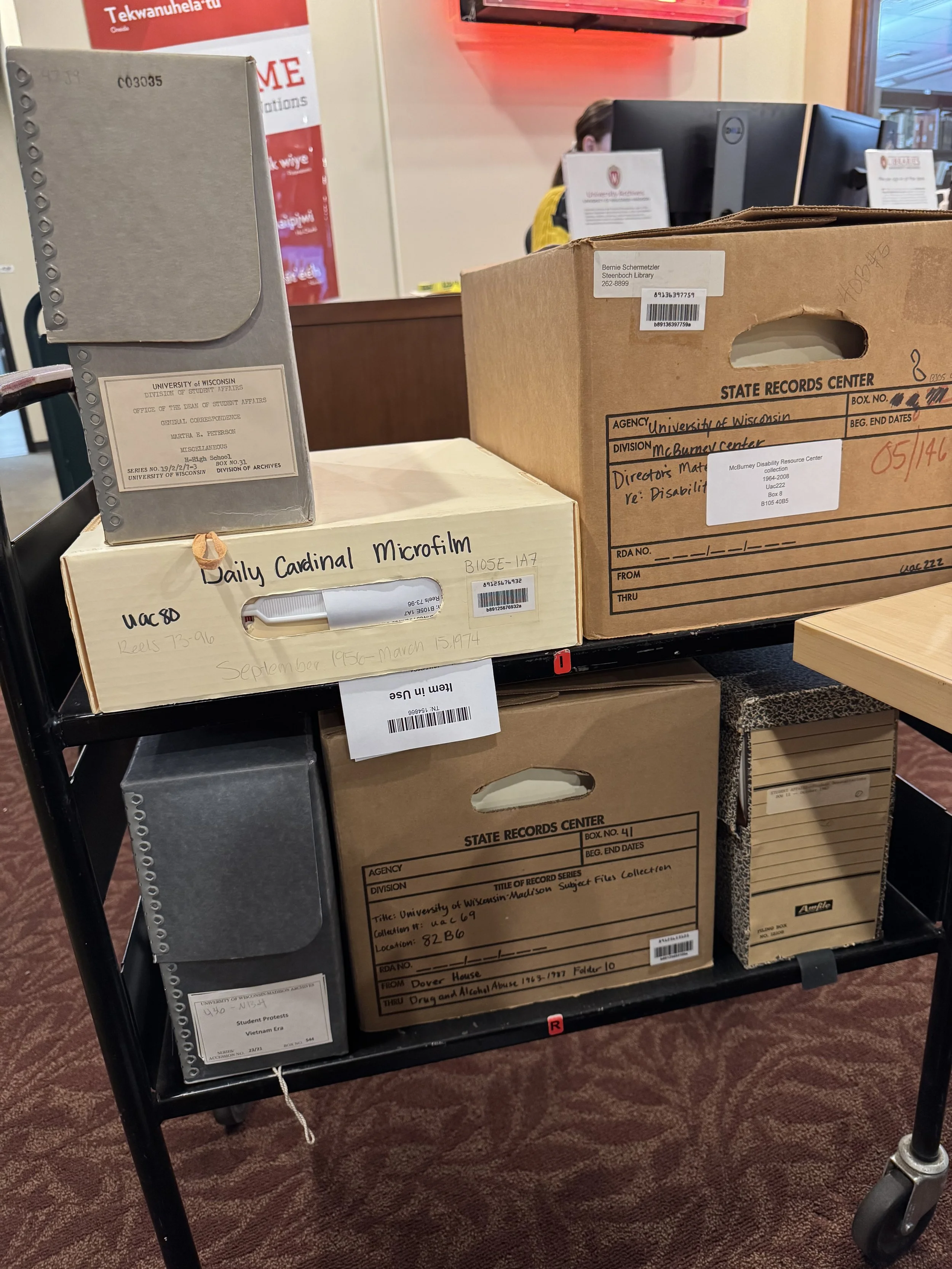
research | archive | preserve | storify
Archival Work
Through my University of Wisconsin-founded Piocent Labs, I’ve worked with nonprofits and historical organizations to develop and implement sustainable archival systems, including digitization workflows, collection processing guides, and exhibit planning materials. I also helped transform a disorganized archival room into a functional archive and co-developed a public-facing exhibit that now supports long-term community engagement and donor outreach. I have highlighted some of that work below.
Meet the Rockford Rescue Mission.
The work.
Founded in 1964 by Reverend Gerald (G.O.) and Nadine Pitney, the Rockford Rescue Mission began as a small storefront Mission in downtown Rockford. Over six decades, it has grown into a cornerstone of social and spiritual support in Northern Illinois, providing shelter, life recovery programs, education, healthcare, and a range of critical services to thousands of individuals each year.
The Mission engaged me to help preserve and present its rich legacy. The work focused on organizing and managing the Mission’s archival materials, and developing a cohesive historical narrative using documents, artifacts, photographs, and oral histories. The goal was to ensure that the Mission’s powerful story could be shared with staff, donors, and the broader community, as well as ensure that the Mission's leadership would have easier access to archival materials in the decades ahead.
The project will culminate in two permanent exhibits:
Staff-Focused Exhibit: Located near the executive and staff offices, this installation will feature documents and artifacts selected for their relevance and impact to the Mission’s team. It serves as a daily reminder of the organization's legacy and mission.
Public-Facing Exhibit: Designed to be immersive and accessible, this exhibit will invite residents, visitors, and community members to explore the Mission’s evolution—from its storefront beginnings to its present-day role as a regional leader in holistic recovery and support.
Further, we are reconfiguring the Mission's archive room to shift it from a general storage area into a structured and managed archival space. This transformation involves implementing a clear system for cataloging and organizing materials, improving preservation conditions, and developing protocols to ensure long-term accessibility and care. By moving beyond passive storage, we are establishing a working archive that supports research, promotes the Mission's historical development, and reflects best practices in archival management.
This transformation reduces the risk of material loss, ensures more efficient retrieval of records, and minimizes redundancies in administrative efforts. Over time, this increases operational efficiency and decreases the costs associated with disorganized or inaccessible materials.
This project ensures that the Rockford Rescue Mission’s history is not only preserved, but also shared with intention—honoring its founders, celebrating decades of transformation, and inspiring future generations of supporters and changemakers. ROI will be achieved through greater visibility, increased donor support, and significantly improved access to materials.
Interested in collaborating?
I work with museums, historical societies, and other mission-driven organizations to help them uncover, organize, and share their institutional history. That can mean building out archival systems, making sense of legacy collections, or helping develop exhibits that connect with the public in meaningful ways.
My background is in historical research and archival practice — I’m currently a doctoral researcher at DePaul University and the University of Wisconsin–Madison. I’ve worked on archival projects ranging from local nonprofits to institutional exhibit design, and I focus on making historical materials more accessible, more usable, and more impactful. My goal is always the same: to help organizations put their history to work in ways that are thoughtful, practical, and rooted in strong research.

